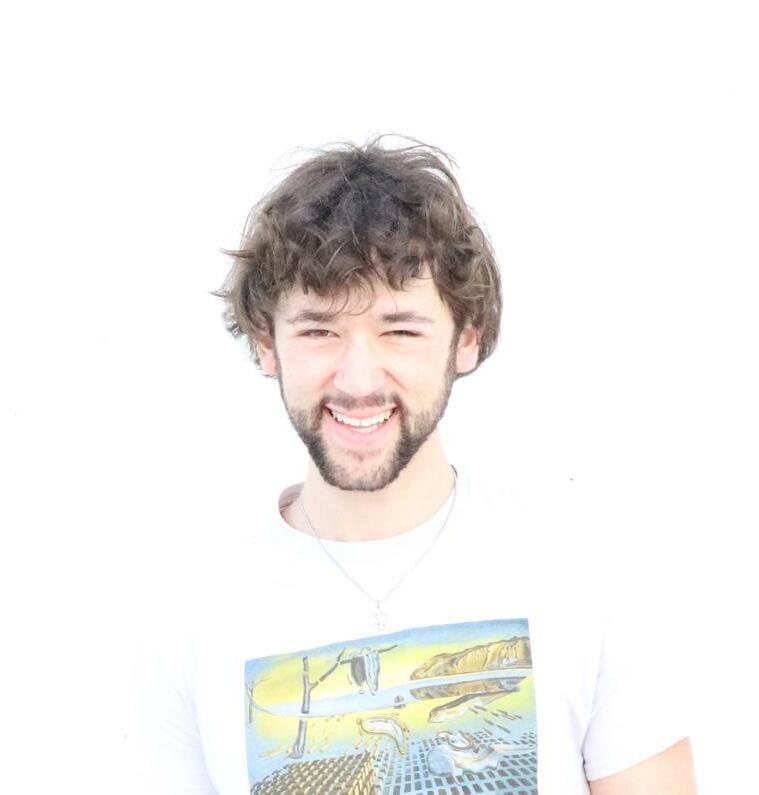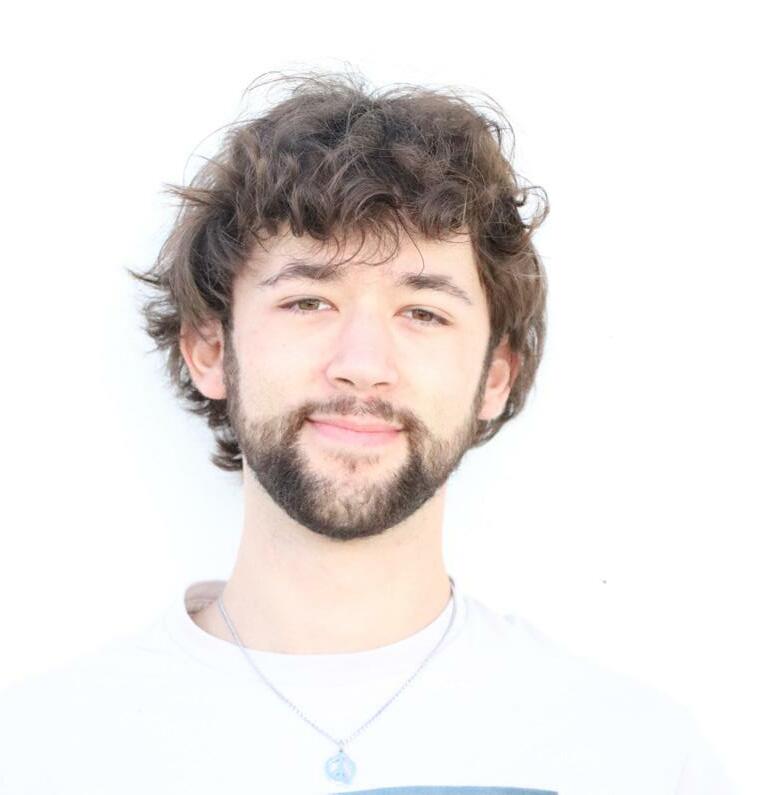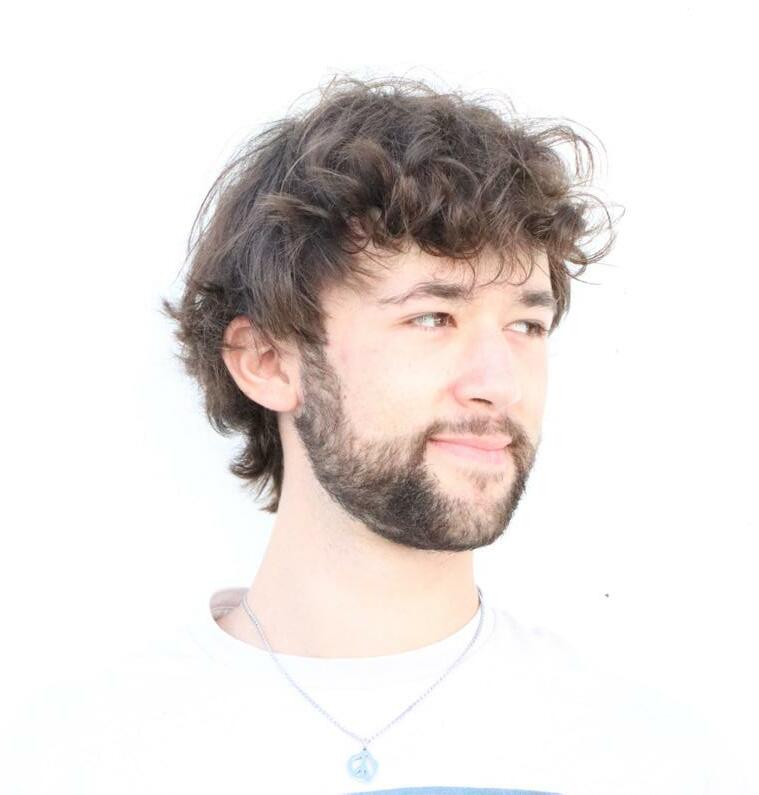
4 minute read
THE gears BEHIND THE gallery Patrick
Many Miami residents and tourists travel far and wide to visit world-renowned artist Xavier Cortada’s art gallery located in Pinecrest Gardens. There to help them beyond the information provided by the placard under the painting is none other than Miami Palmetto Senior High senior, Patrick Rodriguez. Rodriguez assists in raising awareness about the environment by showcasing Cortada’s art. Cortada’s artwork is known for giving a voice to social justice and environmental issues by depicting them in a visual form.
“A lot of people cannot really understand something through just words or just reading something…art is something that evokes feelings in a lot of people…when it comes to activism, it is just so important that those feelings are involved,” Rodriguez said.
Advertisement
Though Rodriguez does not create art himself, he has adapted to the ins and outs of the creative industry. Taking a different path from most who find a passion in art, he is pursuing art business, tying together a love for art and a knack for entrepreneurship. Rodriguez’s interest in art began in his junior year taking AP Art History and continued when he attended the Sotheby’s Institute of Art’s summer program in New York City.
Rodriguez brought his knowledge back to South Florida and now works showcasing Cortada’s work at the Pinecrest Gardens Hibiscus Gallery.
“[Cortada] kind of assigned me to the gallery itself, which is in Pinecrest gardens, so I kind of run that gallery. I do the marketing for the gallery, so I run the Instagram. I make graphics for the Instagram. I am kind of a representative. So when people come in, they ask about the gallery. I am usually there on Sundays from 9:00 a.m. to 2:00 p.m. and [people] come in and people will ask questions, and I will guide them through his work through the gardens,” Rodriguez said.
Rodriguez has used the opportunity to help him grow in different ways. The interactions at the gallery allow him to communicate better, and his constant interaction with art that advocates for the environment has helped him understand the cause on a deeper level.
“I kind of saw him talking to people and really getting to know people and telling them about the art. It was just really cool to see him understand and have a deeper meaning for all of the pieces,” MPSH senior and friend of Rodriguez, Katie Herskowitz said. “Although he does not actually make the art, he can kind of depict the art extremely well; he understands the meanings and he loves figuring out the meanings.”
Rodriguez’s friends and family have been standing behind and supporting him throughout the course of his work. Rodriguez’s older brother even provided him with connections to Cortada, aiding him to become one of the youngest people Cortada works with, as the artist tends to only work with college and post-graduate students.
“[My family is] extremely proud… There is something in our blood and in our family that the art runs through…I think it is a beautiful thing that Patrick has been able to find this interest and really take flight with it,” Patrick Rodriguez’s older brother Philip Rodriguez said.
Patrick believes art has a special role in justice movements because of its ability to move and inspire people. Art often changes
Rodriguez
how people feel about a subject and can compel them to take a stand.
“Art is something that evokes feelings in a lot of people. Some people will see art and feel something from it and that is what it does. You feel something when you listen to music, you feel something when you see a painting or when you see a sculpture, it is not defined by a certain medium, anything is art, and it is just something that evokes that feeling. So when it comes to activism, it is just so important that those feelings are involved because you will not want to get involved in something or be active in something unless you feel strongly about it,” Patrick said.
Patrick looks to make his mark on the art world by challenging people’s perceptions. He acknowledges that many people feel detached from the art world, believing that art is something exclusive, for the privileged few.
“I think art is kind of seen as this upperclass sort of thing that only certain people have the luxury to enjoy and I just don’t think that that’s true, or it should not be true, because it is something that everybody should be able to enjoy,” Patrick said.
Making change is important to Patrick and his work at the gallery facilitates that passion.
“I think Patrick working for them makes a lot of sense because he’s a big advocate of changing the world,” Herskowitz said.
Sofia Taddeo-Goldstein
Opinion Editor
s.taddeogoldstein.thepanther@gmail.com
Daniel Perodin Staff Writer


d.perodin.thepanther@gmail.com
Maddie Volpe
Multimedia
Video Editor
m.volpe.thepanther@gmail.com
DESIGN BY MIA SHIELDS
Growing up surrounded by the ocean, Miami Palmetto Senior High Marine Science honors teacher Nicolas Quintairos has always had a fervent admiration for marine life. Pursuing his education in marine biology, aquaculture and entrepreneurship, Quintairos found a way to incorporate every element of wildlife conservation, media and adrenaline into his company, Reel Ocean.
As a graduate student at the University of Miami’s Rosenstiel School of Marine and Atmospheric Science, Quintairos, alongside co-founder Jake Weinberger, founded Reel Ocean, a company dedicated to educating people on South Florida’s environment and instilling providing hope for the preservation of the ocean through media outlets and documentaries. Quintaros initially started the business to plant mangroves, but he shifted his idea to fit his aquatic and adventurous lifestyle.
“The idea kind of came from the fact that I love diving. I love being out in the world. I love just being underwater. And so I wanted to design the company in a way where [I can] make myself go diving more, and also build the company through that. And really one of the only options was to film what we are doing and learn how to use a camera underwater. And so that is what we did, . Aand that is what we are currently doing,” Quintairos said.




